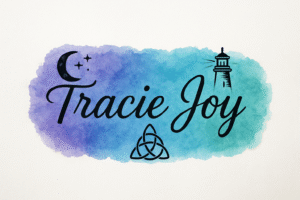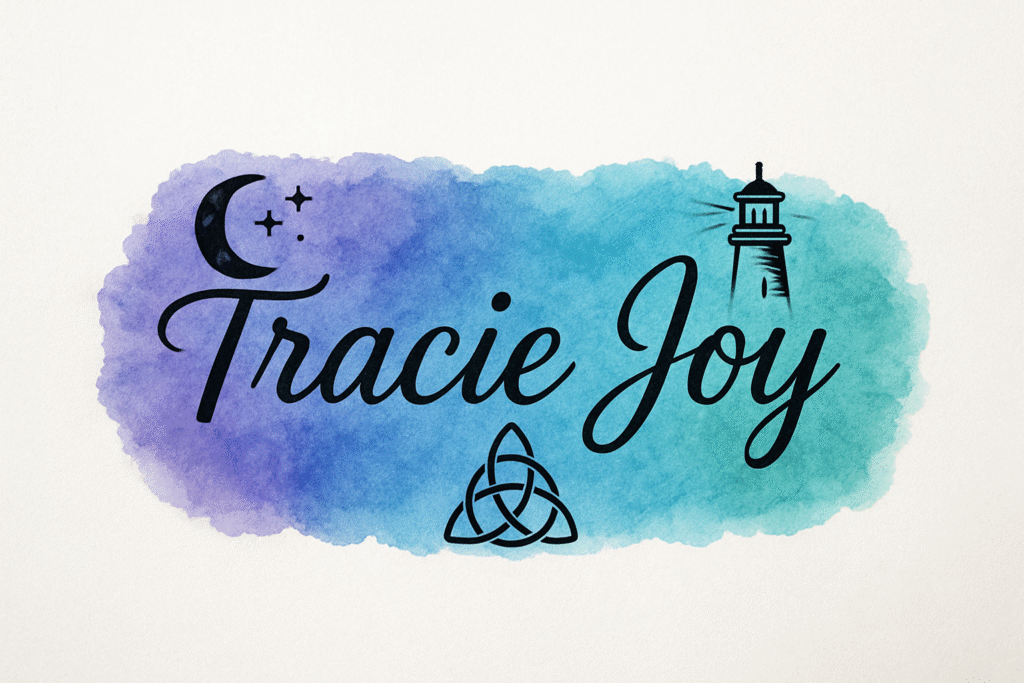Using Foreshadowing Without Giving Too Much Away
Readers love those magical “aha” moments when everything falls into place. That’s the beauty of foreshadowing. It’s the subtle art of planting seeds early in a story so later payoffs feel both surprising and inevitable. But there’s a delicate balance — using foreshadowing without giving too much away takes skill. Do it right, and your readers will trust you, lean in closer, and keep turning the pages. Do it wrong, and you risk spoiling your twists or leaving your audience confused.
What Foreshadowing Really Is (and Isn’t)
Foreshadowing is not the same thing as telegraphing your ending. It’s not about spelling out exactly what’s coming; it’s about leaving breadcrumbs readers might only notice in hindsight. Many writers worry that they’re being too obvious,  when in reality, subtlety is their strongest tool.
when in reality, subtlety is their strongest tool.
It’s also different from coincidence. If something happens out of nowhere, readers feel cheated. If you set it up early with a quiet nod or symbol, the payoff feels earned. A great overview of foreshadowing’s basics can be found in this Reedsy guide on foreshadowing.
The Different Types of Foreshadowing
Not all foreshadowing works the same way. Writers can choose from a variety of techniques, depending on tone, genre, and character perspective.
- Symbolic foreshadowing: Objects, weather, or imagery can hint at future events (like a storm rolling in before tragedy).
- Direct foreshadowing: Dialogue or warnings that seem casual at first but grow in significance.
- Red herrings: False clues that keep readers guessing — but shouldn’t undermine the real trail.
Balancing tone is crucial here. If your foreshadowing is too heavy, it kills suspense; if it’s too light, readers won’t notice it at all. For more on balancing narrative tension, check out my post on Balancing Humor and Drama in Fiction.
Techniques to Foreshadow Without Spoiling the Surprise
So how do you keep foreshadowing subtle but effective? Foreshadowing works best when it feels natural. You don’t want your reader to stop and think, “Ah, that’s definitely a clue.” Instead, you want the hint to blend into the story so smoothly that it feels obvious only in hindsight. Here are some techniques to help you pull that off:
1. Use motifs and recurring details
Repetition is one of the most effective ways to foreshadow without being heavy-handed. A phrase, an object, or even a color can take on layered meaning as the story unfolds. Think of a lullaby that shows up in different scenes — at first it feels sweet, but later it signals danger or loss. Because the motif is part of the fabric of the story, readers accept it without suspicion until the moment it clicks.
2. Hide clues in plain sight
The best foreshadowing often disguises itself as ordinary description. A passing comment about a character’s  superstition, a seemingly random shot of a broken clock on the wall, or a casual mention of the weather can all be clues. Readers skim past them at first, but later those details stand out. This works because the information is innocuous enough not to raise alarms but memorable enough to trigger recognition later.
superstition, a seemingly random shot of a broken clock on the wall, or a casual mention of the weather can all be clues. Readers skim past them at first, but later those details stand out. This works because the information is innocuous enough not to raise alarms but memorable enough to trigger recognition later.
3. Tie foreshadowing to your theme
When foreshadowing echoes your novel’s bigger ideas, it never feels out of place. In a story about betrayal, perhaps the first scene shows a character double-crossing someone in a minor way — foreshadowing the devastating betrayal to come. By connecting hints to the thematic thread, you keep them relevant even if the reader doesn’t recognize them as foreshadowing until much later.
4. Filter hints through character perspective
Let foreshadowing flow naturally from the way your characters see the world. A nervous laugh, a gut instinct, or a fleeting look of dread can foreshadow what’s coming without breaking immersion. Because the clue feels like part of the character’s personality, it doesn’t stick out as a signpost. For example, a cautious character might always check the windows twice — a habit that later proves wise when danger arrives.
5. Use contrast and irony
Sometimes foreshadowing works best when it creates dramatic irony — readers sense that something is off, even if the characters don’t. A wedding toast promising eternal happiness might foreshadow a looming tragedy. By leaning into contrast, you create tension without giving away the specifics of what’s coming.
6. Plant small, escalating hints
Instead of dropping one big clue, sprinkle several small ones that build on each other. A character might casually mention an old injury, later struggle with it in a high-stress scene, and finally have it play a crucial role in the climax. Escalation makes the payoff feel earned because readers have watched it grow.
If you want to explore structural strategies for integrating foreshadowing at the right points in your novel, K.M. Weiland’s site is an excellent resource.
Examples in Action
Foreshadowing comes alive when we see it at work:
Classic literature: Macbeth
Shakespeare’s Macbeth is a masterclass in foreshadowing. The witches’ cryptic lines, “Fair is foul, and foul is fair,” set the tone immediately, hinting that appearances will deceive and morality will blur. Later, the prophecy that Macbeth cannot be killed by any man “born of a woman” seems like an impossible safeguard, but it foreshadows his downfall at the hands of Macduff, who was delivered by caesarean birth. The brilliance of Shakespeare’s foreshadowing lies in how it misleads while still telling the truth. Readers and audiences feel both shocked and satisfied when the prophecy’s meaning is revealed.
Modern YA: The Hunger Games
Suzanne Collins plants foreshadowing in ways that feel natural to the story’s world. When Katniss receives the mockingjay pin early on, it seems like a small token of comfort and luck. But the mockingjay itself is a loaded symbol, tied to rebellion and unintended consequences of the Capitol’s experiments. The pin foreshadows not only Katniss’s role as a reluctant revolutionary, but also the broader uprising that defines the series. Readers may not grasp the full weight of the mockingjay in the first book, but when it becomes the emblem of resistance, the payoff feels inevitable — and powerful.
Film/TV: The Sixth Sense
M. Night Shyamalan’s The Sixth Sense is one of the most famous examples of cinematic foreshadowing. From the opening, the film quietly signals its twist: Bruce Willis’s character never interacts directly with anyone but the boy, Cole. Details like his wife’s coldness at dinner or the fact that no one else acknowledges him play as signs of marital strain or background tension , until the final reveal reframes them all. What makes this foreshadowing work is restraint. The clues are visible, even obvious, but viewers accept the surface explanation until hindsight flips the perspective.
Great foreshadowing often goes hand in hand with character growth. To see how this plays out in storytelling, read my post on How to Build Strong Character Arcs in Fiction.
Common Pitfalls (and How to Avoid Them)
Even though foreshadowing is one of the most satisfying tools in a writer’s kit, it can easily backfire. Here are the most common missteps and ways to sidestep them:
1. Over-explaining the hint
If you point too directly at the clue, readers will connect the dots too soon. Imagine a character saying, “I sure hope this locked door doesn’t mean there’s a monster hiding inside.” That kills suspense. Instead, let the locked door be mentioned once in passing, then return to it later when the reveal lands. Trust your reader to pick up on patterns without spelling them out.
2. Being too subtle
The opposite problem is making your foreshadowing so faint that no one notices. If your hint only makes sense to you as the author, it won’t satisfy your readers. The goal is for readers to feel a spark of recognition during the reveal — “Oh! That’s why the strange neighbor kept feeding the stray cats.” During revisions, ask beta readers if they caught your clues. If no one does, dial them up slightly.
3. Using red herrings recklessly
Red herrings can add intrigue, but if you scatter too many, readers may feel tricked or exhausted. A false clue should still make sense within the story — it can redirect attention without wasting it. For example, a mysterious character might act suspicious to hide a personal secret, but that secret should still be meaningful even if it’s not tied to the main twist.
4. Confusing foreshadowing with coincidence
Writers sometimes try to patch holes by claiming something was “foreshadowed” when it wasn’t. If your character suddenly develops a skill at the exact moment it’s needed, readers won’t buy it. True foreshadowing means you laid groundwork earlier, even if it was subtle, so the later event feels earned, not random.
5. Dropping hints that don’t pay off
Every foreshadowing seed you plant should eventually sprout. If you describe the rusty knife on the mantel three times but never return to it, readers will feel cheated. This is often called “Chekhov’s gun,” if you hang a gun on the wall in Act One, it should be fired by Act Three. Otherwise, trim the unnecessary hint during edits.
Foreshadowing Revision Checklist
When you’re editing, run through these quick questions to make sure your foreshadowing is working the way you want it to:
-
Is it subtle? Does the clue blend naturally into the story without screaming “important!”?
-
Is it noticeable in hindsight? Will readers look back and think, “Oh, that makes sense now”?
-
Does it fit the theme? Does the foreshadowing echo your story’s larger ideas or conflicts?
-
Does it tie to character? Is the clue delivered through personality, habits, or perspective rather than author intrusion?
-
Does it pay off? Every significant hint should lead somewhere — if not, cut or repurpose it.
-
Is it balanced? Are you avoiding both extremes of over-explaining and being so subtle that no one notices?
Treat this checklist like a final polish. If you can answer “yes” to most of these, your foreshadowing is in great shape.
Conclusion
When done well, foreshadowing feels like a magic trick. You invite readers to participate in the story without tipping your hand. Using foreshadowing without giving too much away isn’t about hiding clues; it’s about building trust, raising curiosity, and rewarding close attention.
The next time you’re revising a scene, ask yourself: what small moment could hint at bigger things to come? Then plant that seed, step back, and let your story bloom.



